What is Devil’s Toothpaste by Mark Rober?
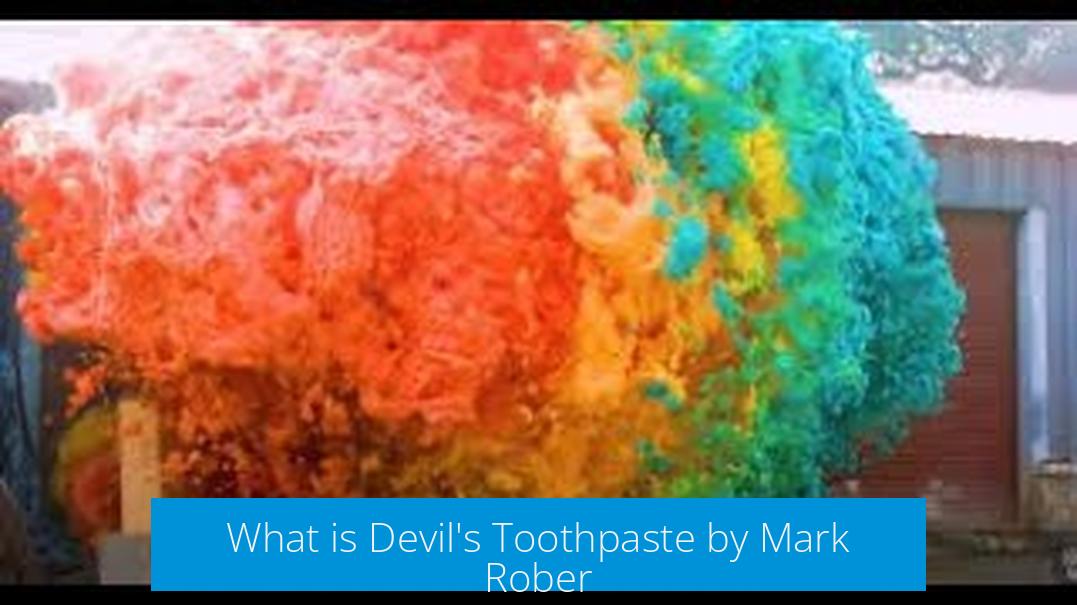
Devil’s toothpaste is a highly vigorous chemical reaction involving concentrated hydrogen peroxide and powerful catalysts, producing rapid oxygen release and intense foam coupled with significant heat. Unlike conventional elephant’s toothpaste, this reaction generates large volumes of steam and foam that actively flow out of containers but do not continuously expand.
Understanding the Reaction Mechanism
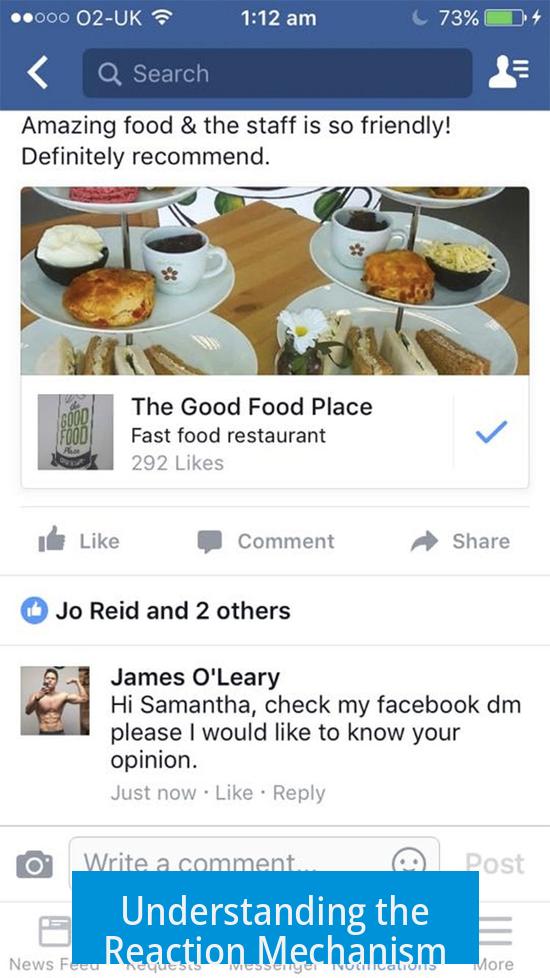
The core of devil’s toothpaste lies in the decomposition of hydrogen peroxide (H2O2), a redox process where peroxide acts as both oxidizer and reducer. This breakdown produces water (H2O) and oxygen gas (O2), releasing energy rapidly. Catalysts accelerate the rate at which peroxide decomposes.
- Typical reaction: 2 H2O2 → 2 H2O + O2 (gas)
- In devil’s toothpaste, peroxide concentration and catalyst choice maximize oxygen release and heat.
- Oxygen bubbles cause the characteristic foam formation when combined with dish soap.
Heat and Gas Production
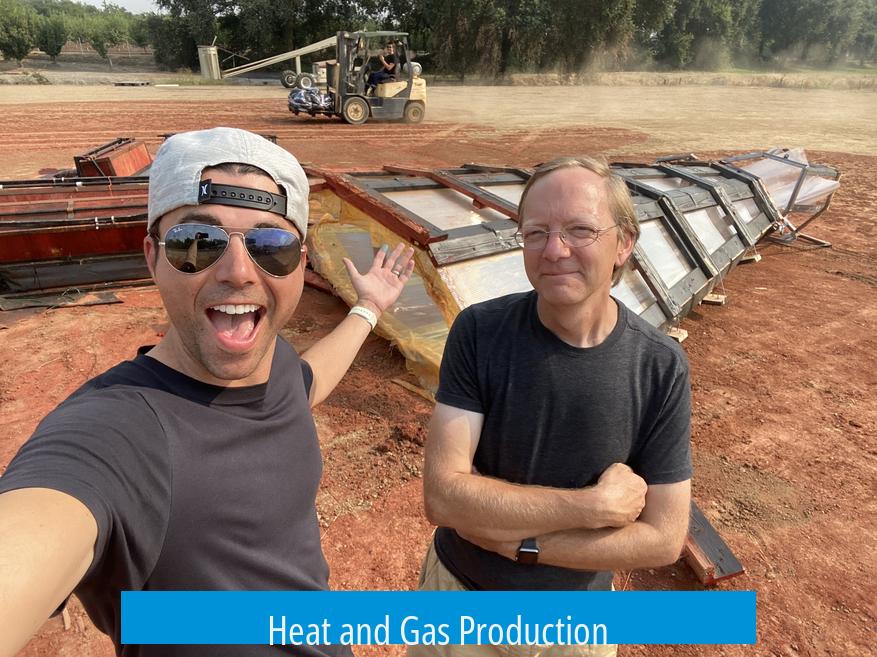
The reaction is exothermic, with temperatures estimated over 150°C. It produces rapid oxygen evolution and abundant foam. When mixed with bleach (sodium hypochlorite) or strong catalysts, the reaction intensifies further.
Comparison with Elephant’s Toothpaste
Devil’s toothpaste contrasts from elephant’s toothpaste mainly by reaction intensity and behavior. Whereas elephant’s toothpaste foam expands and grows continuously, devil’s toothpaste foam flows out of containers without ongoing expansion. Differences appear related to peroxide concentration and catalyst strength.
Chemical Components and Catalysts
Hydrogen Peroxide Concentration
- Concentrations vary from common 3% (consumer grade) to industry-grade 30% or more.
- Mark Rober likely uses 30% or higher peroxide, accelerating oxygen release.
- Higher peroxide concentrations yield faster, hotter reactions.
Common Catalysts
| Catalyst | Role | Notes |
|---|---|---|
| Potassium Iodide (KI) | Speeds peroxide decomposition | Often used instead of sodium iodide; enhanced by sodium hydroxide addition |
| Manganese Dioxide (MnO2) | Strong decomposer, generates steam plume | Cheap, safe, fast catalyst; likely used by Rober |
| Potassium Permanganate (KMnO4) | Strong oxidizer and catalyst | Known for rocket propellant use; possible substitute for iodide |
| Bleach (NaOCl) | Reacts with H2O2 exothermically | Produces chlorine ions; causes intensified reaction with heat and yellow tint |
| Other | Silver iodide, colloidal silver, ammonia | Discussed but less substantiated experimental evidence |
Experimental Conditions and Setup
Mark Rober experimented with multiple ratios and reagent types over months, adjusting peroxide concentration and catalyst loading. Usually, blue plastic containers feed liquid mixtures into barrels filled with soap solution. Air compressors pump air to promote foaming. Foam flows continuously out of barrels.
- Operators use PPE: gloves, face shields, aprons.
- The reaction produces visible steam, bubbling, and yellowish coloration.
- Strong chlorine-like odor often accompanies the reaction, indicating chlorine or hypochlorite involvement.
Safety and Secrecy
The precise formula remains undisclosed due to safety risks. High concentrations of hydrogen peroxide combined with reactive catalysts can generate intense heat and oxygen rapidly, posing burn and explosion hazards. Mark Rober advises that untrained individuals should not attempt replication. Personal protective equipment and controlled environments are essential for safety.
Community Theories and Experimental Suggestions
Online communities call for collaborative experiments to replicate the reaction. Proposed tests include:
- Comparisons of 3% versus 30% peroxide effects.
- Trials with different catalysts: iodide, manganese dioxide, potassium permanganate, bleach.
- Assessment of soap brands and dye additives influencing foaming.
- Monitoring heat generation, foam expansion rates, and gas evolution.
A subreddit-wide or Discord collaboration has been suggested to refine results and verify theories.
Summary of Key Points
- Devil’s toothpaste involves rapid decomposition of concentrated hydrogen peroxide catalyzed by strong agents like potassium iodide or manganese dioxide.
- The reaction is highly exothermic, producing heat above 150°C, oxygen gas, and voluminous foam.
- Catalyst choice and peroxide concentration critically affect reaction intensity.
- The reaction differs from elephant’s toothpaste by foam behavior and heat generation.
- Due to safety concerns, the exact formulation is kept private; recommended for trained professionals under controlled conditions only.
- Community efforts aim to better understand and replicate the experiment through varied catalyst and concentration studies.
The Fiery Chemistry Behind Mark Rober’s “Devils Toothpaste”: What Makes It So Explosive?
Mark Rober’s “Devils Toothpaste” isn’t just a cool name; it’s a fiery chemical spectacle involving supercharged reactions with hydrogen peroxide and catalysts. So, what powers this reaction’s impressive fury compared to the classic elephant’s toothpaste? Buckle up, because we’re diving deep into science’s bubbling cauldron.
First things first, let’s answer the burning question: What actually is “Devils Toothpaste” by Mark Rober and why does it stand out? It’s a massively exothermic decomposition of hydrogen peroxide enhanced by powerful catalysts, producing tons of oxygen quickly, which creates spectacular foam and heat. But unlike elephant’s toothpaste, this reaction generates incredible heat, dense gas plumes, and cascading foamy barrels. The secret? It’s all in the mix of peroxide concentration and choice of catalysts.
1. The Chemistry: More than Just Bubbles and Foam
At its core, “Devils Toothpaste” is a redox reaction. The hydrogen peroxide (H2O2) both oxidizes and reduces itself, breaking down into water (H2O) and oxygen gas (O2).
But the magic is in the details. The classic formula usually combines hydrogen peroxide, soap, and a catalyst—often potassium iodide. When the catalyst hits hydrogen peroxide, it rapidly decomposes, releasing oxygen gas. This oxygen gets trapped in the soap, puffing up foamy bubbles.
Mark Rober tweaks the formula for “Devils Toothpaste” by using much higher concentrations of hydrogen peroxide—30% or more, compared to the typical 3% found in stores. Higher peroxide means the reaction produces more oxygen at a faster rate. The result? More foam and a hotter, more violent reaction.
Adding to this, the reaction is highly exothermic—meaning it releases heat. In fact, folks speculate the temperatures can soar over 150°C during the reaction, which is hot enough to steam and even singe. This intense heat accelerates the reaction further, producing steam plumes and a bubbling frenzy.
2. Catalysts: The Secret Sauce of “Devils Toothpaste”
Hydrogen peroxide by itself decomposes slowly. Catalysts are the go-getters here, speeding up the breakup and maximizing oxygen release.
Potassium iodide (KI) and sodium iodide (NaI) are common catalysts in similar reactions. Mark likely swaps sodium iodide for potassium iodide, possibly at higher doses. But there’s more intrigue.
Some experiments and community discussions point to manganese dioxide (MnO2) as an even faster catalyst. Finely powdered MnO2 rapidly decomposes 30% hydrogen peroxide, launching steam plumes and foam clouds in seconds.
Potassium permanganate (KMnO4) is another catalyst under the spotlight. Known for its strong oxidizing power, KMnO4 is used historically in rocket propellants. Users report that mixing it with peroxide and an acid causes violent, exothermic reactions — a bit like chemistry’s fireworks.
Bleach and chlorine-based catalysts are also rumored. This combo produces chlorine ions with even greater electronegativity than iodine, making reactions zip along faster and hotter. A chlorine smell, yellowish solutions, and “pool water” hints observed in the reaction suggest bleach’s sneaky involvement.
Other theories include biological catalysts like catalase, which breaks down peroxide efficiently but loses effectiveness quickly due to denaturation at high heat.
Lastly, some folks speculate about organic catalysts or silver compounds like colloidal silver or silver iodide enhancing the kinetics.
3. Setups, Observations, and the Devil’s Details
Mark Rober’s approach involves a bit of trial and error, testing various product ratios, peroxide concentrations, and catalysts. Months of hands-on mixing, tweaking, and filming leads to that epic foam explosion you see on YouTube.
The setup involves feeding the mixtures into blue plastic barrels, sometimes pumped with air compressors to mix or aerate further. Operators wear PPE—gloves, aprons, face shields—because safety overrules showmanship here.
When the reaction kicks off, it doesn’t endlessly expand like traditional elephant’s toothpaste. Instead, foam flows out of barrels, eventually stopping when the peroxide is all used up. The reaction produces steam, bubbles, colored smoke, and sometimes a yellowish tint in the liquid, hinting at chlorine presence.
4. Why So Secretive? The Safety Side of “Devils Toothpaste”
Mark keeps his exact formula close to the chest. Why the cloak-and-dagger? Because this is no backyard sleepover experiment.
High peroxide concentrations and strong catalysts can be dangerous. The reaction heats up a lot, sometimes exceeding 150°C, and rapid oxygen release fuels intense bubbling and foam spills.
Imagine mixing highly reactive chemicals that not only release gases but get super hot fast—with the potential for burns or fires if mishandled. Without proper PPE, ventilation, and knowledge, this could be hazardous.
Mark’s secrecy reflects responsible handling for highly reactive chemistry. Not all YouTubers or at-home scientists should try this without expertise. It’s like a magician guarding a trick — sometimes, best to watch the show and stay safe.
5. Group Chemistry: The Community is Cooking Up Theories
The excitement around “Devils Toothpaste” has led many home chemists and enthusiasts to propose experiments trying to replicate Mark’s formula.
Discussions across Reddit and other forums suggest creating Discord servers and community experiments comparing catalysts: iodide vs. permanganate vs. bleach, or testing 3% against 30-70% peroxide. Others want to see the effects of different soaps or food coloring additives.
Why? Because these variations help uncover which factors matter most: is it the peroxide concentration, the type of catalyst, or the ratios? How much does heat versus oxygen production drive the foam and spectacle?
This collaborative spirit reflects chemistry’s essence—trial, observation, and sharing insights to inch closer to the truth.
6. Good Reads and Resources for the Curious Chemist
- Science Bob’s Giant Devils Toothpaste Experiment offers a detailed take on large-scale peroxide decomposition.
- LiveScience’s cotton candy explosion explanation for those craving more on reaction kinetics in sugar-based systems.
- Screenshot of catalyst at 6:22 mark capturing a key moment in Mark’s video.
- Pool supply container image supporting the bleach/chlorine catalyst theory.
- Yellow tinge water image giving clues about reaction components.
7. Wrapping Up: The Devil is in the Details (and Heat, and Bubbles)
Mark Rober’s “Devils Toothpaste” outshines the classic elephant’s toothpaste by amping up peroxide concentration and dialing in potent catalysts like potassium iodide, manganese dioxide, potassium permanganate, or even bleach.
The result? A rapid, hot, oxygen-rich foam spectacle that spills over barrels rather than endlessly expanding in place. The secret recipe combines:
| Hypothesis | Why It Matters |
|---|---|
| Higher Concentration Hydrogen Peroxide (30-70%) | Supplies more oxygen fast; powers the explosive character |
| Potassium Iodide / Potassium Permanganate Catalysts | Speed up peroxide breakdown dramatically |
| Bleach + Hydrogen Peroxide Reaction | Adds heat and reactive chlorine ions, making it fierier |
| Manganese Dioxide Catalyst | Known for fast peroxide decomposition; cheap and effective |
| Combination of Catalyst Type & Ratios | Finding the sweet spot for max reaction intensity |
For amateur chemists, it’s a fascinating experiment to study the power of oxidizers and catalysis—but remember, it’s no casual kitchen project. Respect the science and safety first.
Wondering how “Devils Toothpaste” would perform with your favorite soap or a splash of food coloring? Or which catalyst combo would win in a foam-off? Mark’s video sparks curiosity and community experiments, making chemistry fun and explosive, literally!
Mark’s magical—but secret—formula leaves us happily bubbling with questions and science dreams!
What makes Devil’s Toothpaste different from Elephant’s Toothpaste?
Devil’s Toothpaste uses higher peroxide concentration and different catalysts. Unlike Elephant’s Toothpaste, it doesn’t keep expanding but flows continuously from barrels. The catalyst type and peroxide amount affect its speed and heat.
Which catalysts are used to speed up the Devil’s Toothpaste reaction?
Potassium iodide, manganese dioxide, and potassium permanganate are common catalysts. Bleach is another option, producing a volatile reaction. Each catalyst affects the reaction speed and heat output differently.
How does hydrogen peroxide concentration affect Devil’s Toothpaste?
Higher peroxide concentration creates more oxygen quickly and releases more heat. Concentrations around 30% or higher cause a faster, hotter reaction than the typical 3% peroxide found in stores.
Why does the reaction produce so much heat in Devil’s Toothpaste?
The reaction breaks down hydrogen peroxide rapidly, releasing oxygen and heat. Using catalysts and high peroxide concentrations makes it strongly exothermic, reaching temperatures over 150°C in some cases.
What experimental setups does Mark Rober use to create Devil’s Toothpaste?
He uses barrels with foaming solution, air compressors to feed air, and mixes high concentration peroxide with catalysts. Proper safety gear like gloves, face shields, and aprons are worn during the process.


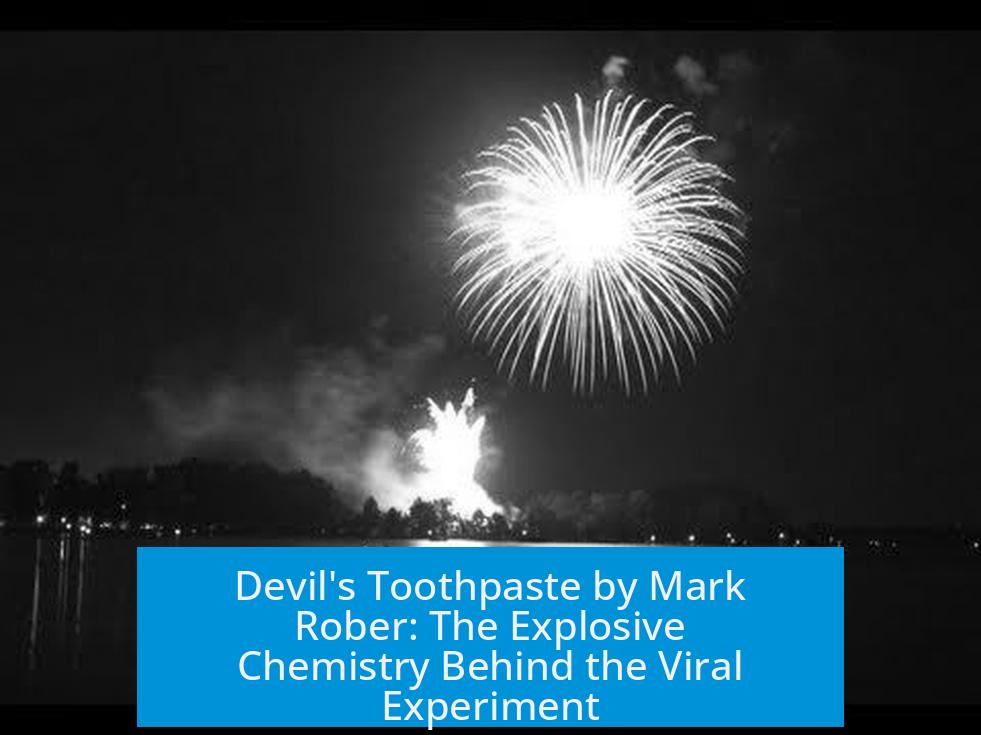
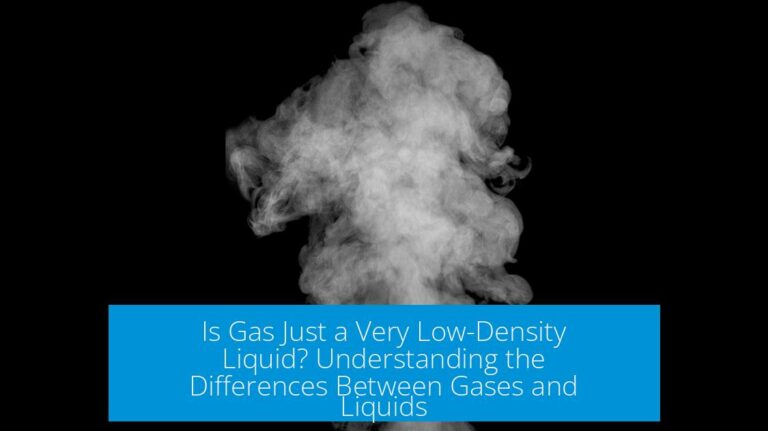

Leave a Comment